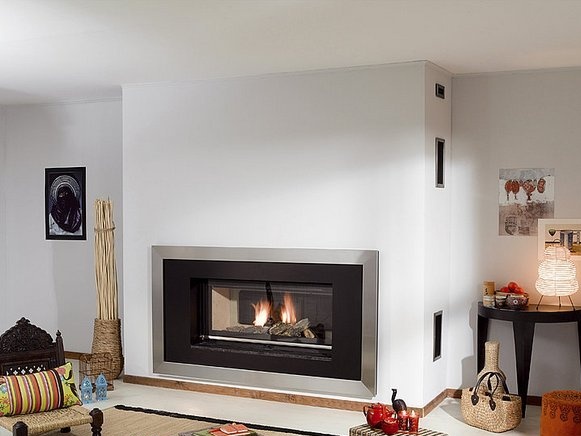
The development of civilization, its new trends leave an imprint on almost everything. At least recall how, over time, the internal structure of various objects changes, and at the same time their appearance. One of the most interesting evolutionary stories has a fireplace. Not all people, installing fireplaces today, know that once this item, now considered an attribute of luxury and status, was used exclusively for heating rooms in the homes of the poor. The history of the fireplace began in ancient times, when people began to enclose the fire with stones. The desire to tame fire was the beginning of the birth and development of a modern fireplace.
In ancient Rome, they were puzzled by moving the hearth inside the home. So the first fireplace appeared. No wonder its very name comes from the Roman "caminus", which means an open hearth. The first indoor stoves had very simple shapes and, as a rule, were installed in the central part of the room. The troubled times of the Middle Ages left its mark on the design of the fireplace, and on its shape. At this time, giant indoor stoves were used for cooking on a spit. There was no question of any aesthetics of a room oven. In the XV-XVI centuries, when almost any household item was given artistic value, the fireplace began to acquire a beautiful appearance, to build it began from marble and granite, decorated with mosaics. At this time, the indoor stove finally “moved” from the center of the room to the wall.
With the advent of the pompous Baroque era, the decoration of the fireplace portal became the most refined. It is to this historical period that the tradition belongs to decorate them with stucco bas-reliefs with images of winding vines and birds of paradise. Indoor stoves of the 17th-18th centuries were made mainly of light marble, and gilded bronze was used in their design.
The next stage in the evolution of the fireplace can be considered the appearance of the English classical style. Restraint of decorative elements in combination with straight lines and shapes are inherent in fireplaces of this kind.In France, meanwhile, the era of Napoleon reigned, which, as you know, was very partial to Egypt. Fireplaces began to be made of marble, decorated with Egyptian ornaments. The next style, which left its mark on the design of the fireplace, was "country." Refractory brick was considered the main material for the construction, the decoration of the portal was limited to wood. In the 21st century, “minimalism” appeared in fireplaces in the form of strict forms. The material for the construction of modern indoor furnaces is refractory glass, ceramics and even plastic. In Russia, simple Russian stoves served as an analogue of the fireplace. And only in the era of the reign of Peter I, real fireplaces appeared in the homes of nobles and boyars. That is why it is customary for us to consider them a manifestation of wealth and status as the owner of the house. However, today, due to affordable prices, a beautifully decorated wood-burning fireplace stove may be responsible for heating in a country house.
